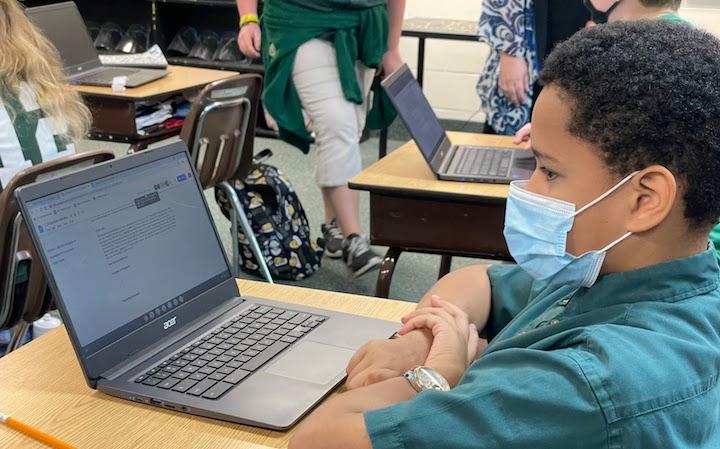"Triage teaches us lessons about the import we place on things in 'normal' times," said Betsy Rafferty, the assistant principal at St. Malachy Catholic School (Philadelphia, Pennsylvania) and a speaker at our recent blended learning conference. "There will be things that we learned out of this pandemic that set us up for how we're serving our kids in the future. What we're trying to do right now as a school is look for the diamonds coming out of this pressure."
Her insights highlight a major theme of our fourth annual Blended Learning in Catholic Schools Symposium (BLiCSS): "building back better." The last year was tough. We may be tempted to simply return back to the same methods and pedagogy we used before the pandemic. Higher-Powered Learning urges you to first carefully consider the academic gains and discoveries of the last year—and yes, there were some—to ensure that we return in the fall with more educational skills and tools than before. As St. John Paul II (Minneapolis, Minnesota) principal and BLiCSS speaker Tricia Menzhuber said, "If we open school the same way we did last year, and if we are not continuing to challenge what we are doing and make it better each day, we've kind of missed the mark."
Many schools discovered the diamond of blended learning this year through their experiences with online and hybrid learning. We hold that whether you intended to or not, you've probably already begun blended learning practices through your educational adaptation and experimentation over the last year. The "pandemic triage" Betsy spoke of underlined just how important personalization, individualized communication, and teacher responsiveness to data really are; we urge you to maintain these positive practices. Even leaders like Betsy and Tricia who have been using blended learning techniques for years found that the past year expanded their appreciation and prioritization of technology in personalizing education.
Perhaps the biggest hurdle towards blended learning we collectively jumped this year is familiarity. Using technology as an instructional tool might have been daunting in the past, but now you've already done it. Students and teachers alike are now intimately familiar with protocols of using software, affordances of directed and group electronic communication, and asynchronous online work time. Technology was centralized this year; Tricia reflected, "Google Classroom was kind of a separate, nonintegrated tool when we were in-person [before the pandemic], now it's a center star. We're presenting content anyway, so why not use the tools that are going to have a high-engagement impact, rather than just throwing some slides or a video up? Teachers are spending a lot more time on what they're putting in front of kids and how engaging that can be."
We've observed teachers this year making a more conscious effort to check in on each individual student's performance and understanding, cued by the constraints of distanced and hybrid learning. We want to keep that happening! Too often we can view students in the classroom as a monolithic group; picture instead each student as you saw them in the Zoom room, with each individual coming from a different place and with different needs. The increased awareness of the need for personalization should segue into leveraging our newfound tech skills. Look for adaptable programs that provide actionable data to inform your in-person instruction.
Another hurdle in blended learning implementation has been the perceived difficulty of changing our school systems. Now we know we can change whole systems quickly when we really want to—we just need to act. Kevin Baxter, the incoming director of ACE's Mary Ann Remick Leadership Program, shared at BLiCSS 4.0, "I think the biggest takeaway of the last year from the national educational perspective is the incredible flexibility and capacity to innovate and implement new models that Catholic schools exhibited when the pandemic hit." We've discovered another diamond in our capacity for innovation—let's not abandon it when we come back.
Mary Jo Madda, the Growth and Engagement Strategy Lead for Education Equity at Google and moderator at BLiCSS 4.0, summarized: "Everything has changed. It hasn't necessarily been the easiest year, but it certainly has been quite a learning year, to say the least. There are a lot of lessons that have come out of this, and understanding how we can take those lessons into the future is one of the silver linings of having been forced to work within the parameters of the pandemic." We encourage you to keep up the beneficial practices you began this year, continue to build on your experience of educational technology, and deepen the personalization that has begun this year.
What diamonds came out of the pressure of the last year in your school? Let us know in the comments below!
 Alliance for Catholic Education
Alliance for Catholic Education
